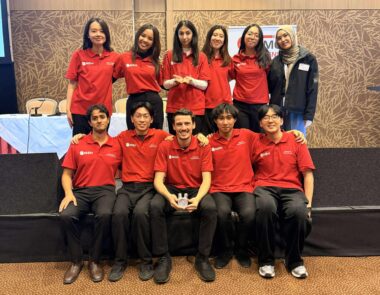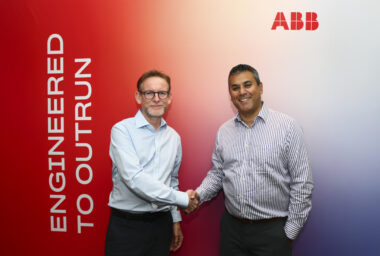
Engineers at UNSW have broken the world record for a specific type of solar cell that has been touted as a potential long-term improvement in photovoltaic technology.
PV researchers around the world are working to find the best material to combine with traditional silicon cells to form a tandem solar cell, which can boost efficiency compared to single junction solar cell.
Scientia Professor Xiaojing Hao and her team from UNSW’s School of Photovoltaic and Renewable Energy Engineering have achieved a best-ever efficiency of 13.2% for high bandgap kesterite solar cells, which had been enhanced with hydrogen.
Kesterite is naturally occurring mineral but can also be artificially created at low cost by combining copper, zinc, tin and sulphur – which are not only all hugely abundant, but are also non-toxic.
The names of the component parts are why, in its synthesised form, kesterite is known as CZTS.
CZTS is a promising material for future generations of solar cells because it is environmentally friendly, cost-effective to manufacture, and is known to maintain its photovoltaic performance over a long period of time.
However, its efficiency has been long-hampered, largely by the number of defects created within CZTS during production, which are hard to avoid.
The UNSW team, including Dr Kaiwen Sun and Dr Jialiang Huang, say they have helped to solve this problem by annealing, or heat-treating, the CZTS solar cell device in a hydrogen-containing atmosphere.
The fundamental research behind the record-breaking efficiencies, which first achieved 11.4% after six years of stagnation for CZTS, has now been published in the Nature Energy journal.
“The big picture here is that we ultimately want to make electricity cheaper and greener to generate,” says Prof. Hao.
“Silicon modules have almost reached the limit of their theoretical efficiency, so what we are trying to do is answer the question coming from the PV industry as to what the next generation of cells will be made of.
“And as well as that, how can we make solar panels less expensive to manufacture, and how can we get more electricity per area so the panels can be particularly beneficial for area-limited PV applications?”
Passivation process
Prof. Hao says that her work on CZTS solar cells has been based on a bottom-to-top approach, whereby all the best attributes required have been taken into consideration first in order to try to identify the perfect material.
The maximum photovoltaic efficiency of CZTS had been stuck at 11% for the past six years, but Prof. Hao and her team’s introduction of hydrogen to help eliminate some of the defects during production now promises even more advancements.
“In basic terms, to create CZTS you take copper, tin, zinc and sulphur and ‘cook’ them all together at a certain temperature which turns it into a material you can use as a semiconductor,” she says.
“The tricky part is controlling the defects that are introduced during that process. What we have shown in this work is that introducing hydrogen can ensure those defects have less of an impact – which is known as passivation.
“Because hydrogen is modulating the defects within CZTS, that’s what helps increase its efficiency in terms of converting sunlight into electricity.”
The use of CZTS could be best implemented in what are known as tandem solar cells, which combine two or more solar cells to capture and convert more of the solar spectrum into electricity, improving overall efficiency.
Prof. Hao says she is hopeful the new breakthrough will accelerate the chances of CZTS reaching 15% efficiency within the next year, and expects its commercialisation by 2030.
“There is still work to be done to find ways to further reduce the defects we find in CZTS, either during the fabrication or via post-fabrication treatments,” she says.
“But we know that this is a good material. When we consider the requirements from the bottom up, we know that we need something that is widely abundant, that is environmentally friendly, that has good optoelectronic properties and can last a long time – and CZTS fits the bill.”
Other tandem options
Prof. Hao and her team at UNSW are also conducting extensive research into another potential material that could partner with silicon, perovskite.
Perovskite is more efficient (close to 27% in small-area examples) in converting the sun’s energy into electricity, but also degrades quickly and contains highly toxic components which can dissolve in water such as lead.
“When you go the other way, from the top to the bottom, maybe with something like perovskite, you can get really high performance and high efficiency at the beginning, but it’s much less stable and the panels might only last for one year so it’s not sustainable,” she says.
“It can take a long time to solve those problems, whereas with CZTS if we can get it to 20% efficiency then I think it will really take off because there are no other limitations since it meets all the criteria for the type of material we want to be using.
“Overall, I think we should be looking into all different types of materials for the top layer of tandem cells. That’s the only way we can maximise our chances of success and accelerate the speed towards obtaining highly efficient tandems that we can use long into the future.”
Key Facts:
UNSW researchers have set a new best mark for a kesterite (CZTS) solar cell which could be a long-term, sustainable and cost-effective add-on or replacement for silicon-based panels.
Contact details:
Neil Martin, News & Content Coordinator, UNSW Sydney.
Email: [email protected]


